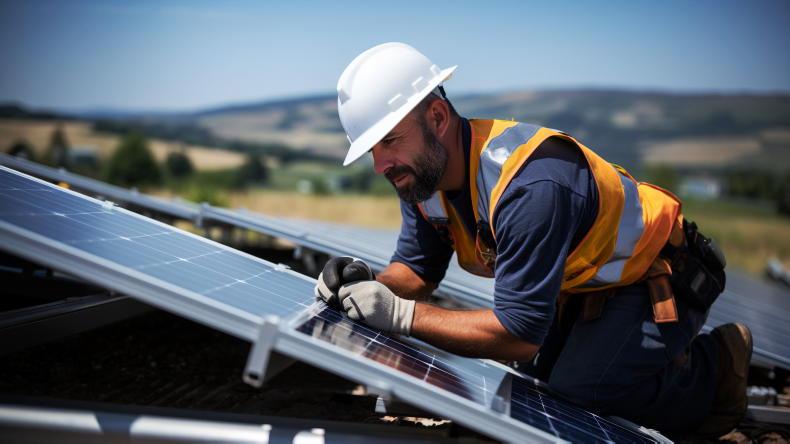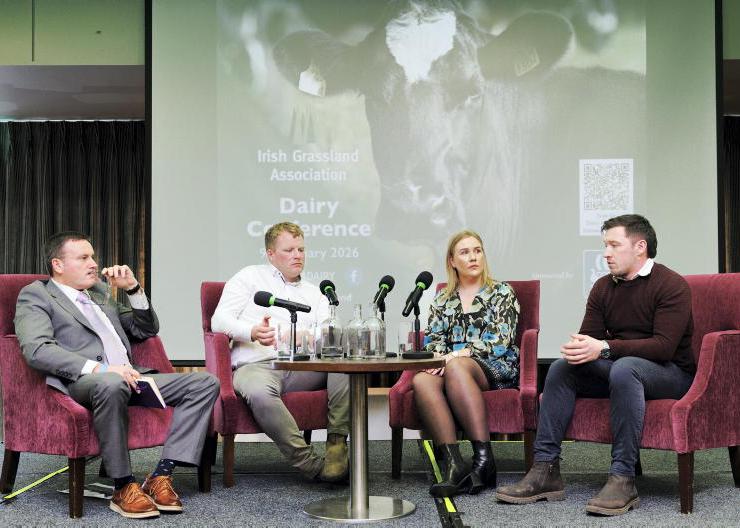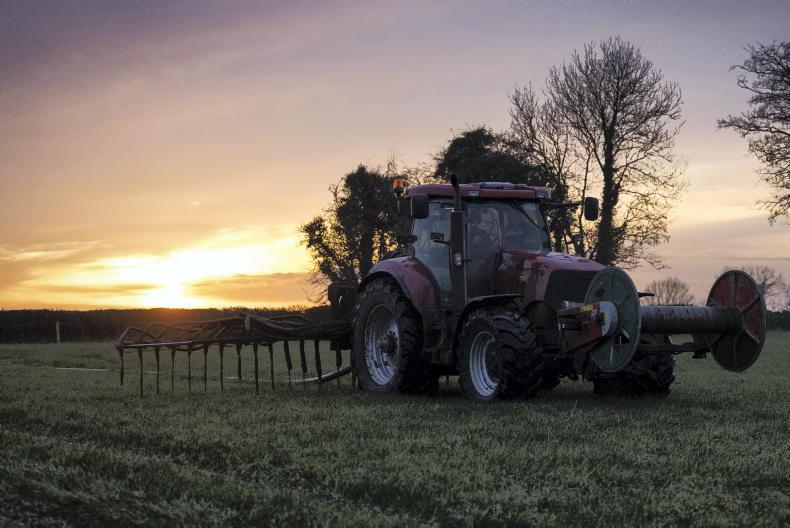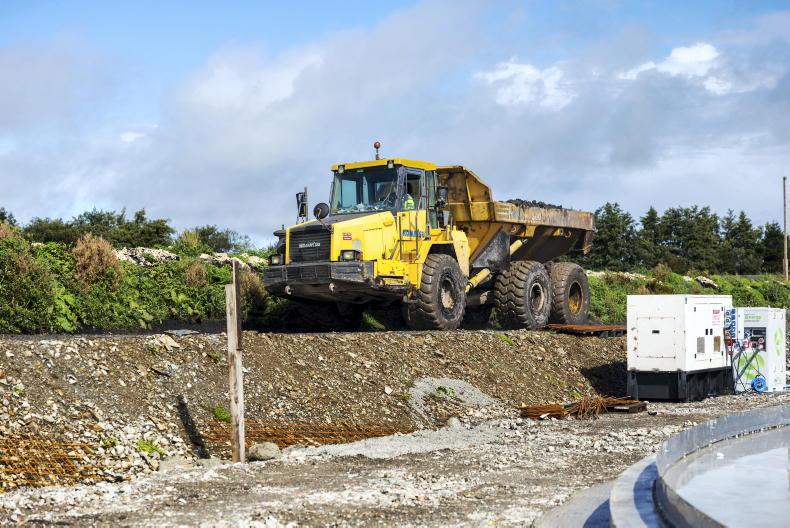The term sustainability in agriculture is multifaceted.
However, the goal is simple - to have an agriculture system that is both profitable while having little to no detrimental impact on the environment.
It involves adopting practices that are economically viable, environmentally sound and socially responsible, ensuring the long-term viability of agriculture and food production.
Principles of sustainability
Sustainable actions on farm can be broken into three specific approaches.
1. Economic sustainability, which is a driving force not just in farming circles, but across all industries. Inherently, businesses will be more responsive to change if it makes economic sense.
2. Environmental sustainability is the action and work taken by farmers to produce food for the consumer with a focus on the environment and being mindful to avoid a negative impact on our society.
3. Social sustainability relates to helping, maintaining and sustaining rural livelihoods, to promote the involvement of local communities and to build markets for sustainable products.
Opportunities ahead
Like many sectors, the agricultural sector faces opportunities and challenges into the future. The world’s population is expected to reach nearly 10 billion by 2050.
With food security being a critical challenge. There will be a requirement for agricultural systems to produce more food to meet this growing demand.
However, this increase in food production will also have to be balanced with a need to reduce emissions and ensure the agricultural sector is playing its part to reduce the impact on climate change.
Under the Climate Action and Low Carbon Development (Amendment) Act 2021, which aims to achieve a climate-neutral economy by no later than 2050, the agricultural sector is required by law, under the above act, to reduce its greenhouse gas (GHG) emissions by 25% by 2030.
This will require a whole-of-industry approach. There is no silver bullet, but there are a range of research and industry initiatives to help.
The new Teagasc Marginal Abatement Cost Curve (MACC) has shown the 25% reduction is achievable, but this is based on reduced stock numbers and a wider adoption of the mitigation measures.
Irish farmers have led the way for generations and have been the envy of the world when it comes to our grass-based production systems. Today, farmers continue to adapt and have done so very well. AIB takes its responsibility to support farmers in their move to a more efficient production system very seriously.
Initiatives such as the Teagasc Signpost programme and Grass10 help farmers implement sustainable measures to improve their farming system and AIB is proud to partner in these programmes to help farmers.
What are farmers doing and what can they do?
Today, farmers are using a multitude of strategies to maximise their farm performance and reduce the environmental impact.
Clover incorporation ticks many boxes and is a measure farmers have already adopted across the country. Its ability to fix nitrogen from the atmosphere while increasing production, with less chemical nitrogen being applied, is a win-win for farmers and the environment.

Maximising soil health status is vital to overall farm performance. The effective use of chemical and organic fertilisers will improve farms’ environmental footprint.
An innovative technology such as protected urea has a number of benefits. Most importantly, it does not break down in dry weather conditions due to the protection from the urease inhibitor which reduces nitrogen losses to the atmosphere.
It is also cheaper than calcium ammonium nitrate (CAN) fertiliser on a cost per kg of chemical N. Along with this, replacing straight urea with protected urea can potentially reduce ammonia loses by up to 79% and replacing CAN with protected urea will lower nitrous oxide (N2O) emissions by up to 85%.
Reseeding can be an expensive task and to ensure successful establishment, it’s vital farmers maintain or improve soil pH, phosphorus (P) and potassium (K) levels. Improving these key indicators will also improve your soil nutrient use efficiency, allowing grass and crops to get all the vital nutrients from the soil.
Soil sampling is a key management practice that farmers can undertake to establish the baseline in terms of soil fertility ie, pH, lime, P and K status and promotes the accurate application of nutrients. It highlights the areas of a farm where nutrients should not be applied, based on the soil status, and, conversely, the areas where nutrients are deficient across a farm holding. Soil sampling promotes better nutrient management planning, which leads to better use of fertiliser/lime input in terms of the financial and environmental footprint of a farm.
Technology such as low emissions slurry spreading (LESS) also aids in reducing ammonia emissions to the environment, thus increasing the level of nitrogen available to the growing plants.
Adoption of technologies such as protected urea can reduce the cost on farming, while improving the overall environmental impact, when compared with traditional methods. Incorporating such technologies, which help reduce nitrogen losses and increase farm performance, have a direct but positive impact on water quality, which is vitally important under the nitrates directive and also helps to improve overall farm bio-diversity.
Farmer outlook
As the industry adapts to new technology, farmers are very much optimistic about the future. In the most recent survey (Q4 2022) conducted by Ipsos MRBI on by behalf of AIB, it found 38% of farmers were very or fairly optimistic about the future.
Even more importantly, 60% of farmers believe improving the environmental sustainability of their farm would have a positive economic impact on their income.
AIB’s head of agriculture Donal Whelton said: “Unsurprisingly, rising input costs was high on the list of farmers’ concerns in 2022. However, it is encouraging to note that optimism has increased among farmers and this is reflected in increased numbers looking to grow their business and increased confidence in the sector, with two-thirds of farmers planning to invest in their farm over the next three years.
"Another interesting finding in relation to sustainability was that over 72% of farmers considered their farm economically sustainable and over 60% of farmers felt that improving environmental sustainability on their farm would have a quite positive or very positive impact on farm income.
"With an ambitious emissions reduction target for the sector to 2030, the survey highlights the commitment of farmers to continue on the journey to a greener future for the agri sector.”
Future technology
The future of agriculture will see farmers increasingly incorporate innovative technologies such as solar power, anaerobic digestion and overall advances in research to drive sustainability and efficiency. Solar energy presents a promising avenue for powering farms and reducing their carbon footprint.

Advancements in solar panel technology and storage solutions enable farmers to harness the sun's energy, providing electricity for farm operations and reducing reliance on conventional energy sources.
Anaerobic digestion is gaining traction as a sustainable waste management and energy production method in agriculture. This process involves breaking down organic materials, such as crop residues and livestock waste, in an oxygen-free environment to produce biogas rich in methane.
The biogas can be used to generate electricity and heat, offering a renewable energy source that not only powers the farm, but also reduces GHG emissions from waste decomposition.
Combining technologies such as solar power and anaerobic digestion, along with the latest research in grass and animal science, gives immense promise for a more sustainable and self-sufficient production system.
Farmers can implement measures mentioned in this article and AIB is here to support your journey towards a more sustainable production system.
If you’d like to read more information on how AIB can help you, please see AIB’s agricultural webpage or contact one of AIB’s agricultural advisers in your area.

Allied Irish Banks plc is regulated by the Central Bank of Ireland.










SHARING OPTIONS